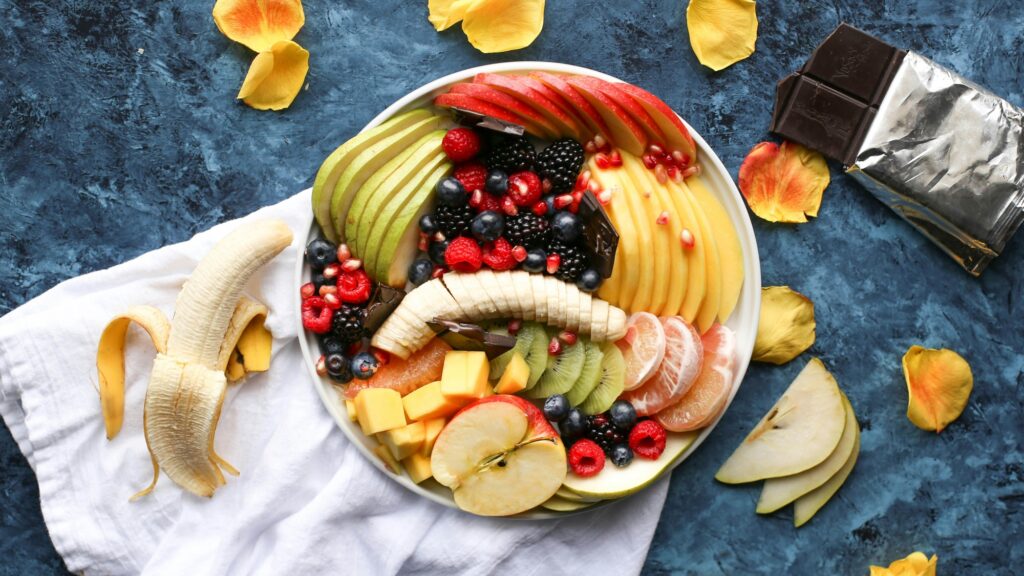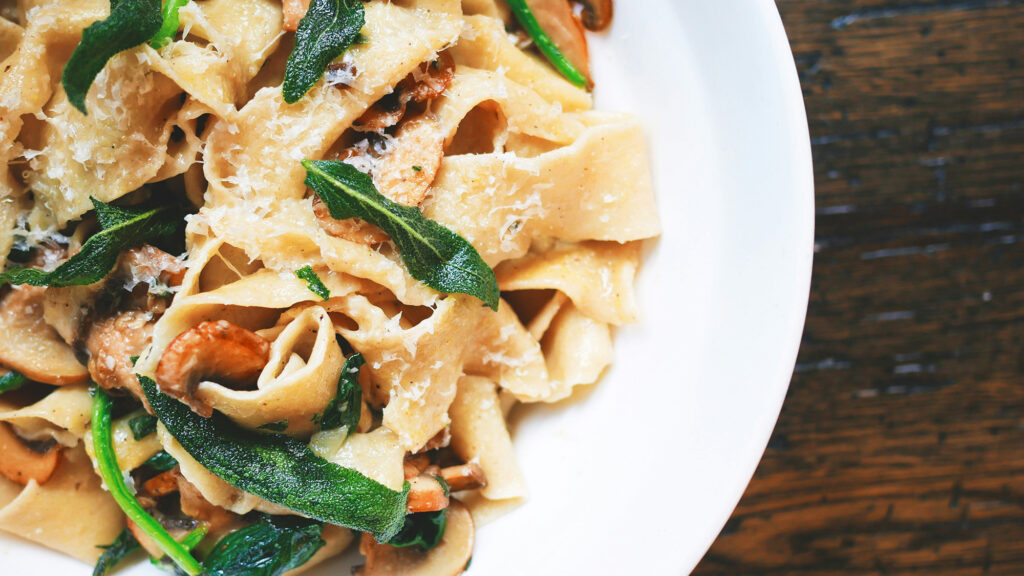Fruit is an essential part of a healthy diet, but some can cause a short-lived sugar rush followed by an energy crash. And that’s not great for people carefully watching their blood glucose levels.
The glycemic index helps classify food on its blood glucose impact, but that sometimes doesn’t tell the full story.
Below, we explore nine common fruits that have a low glycemic index, and examine how they impact blood sugar using Ultrahuman’s Open Glucose Database.
The results might surprise you.
What are glycemic index and glycemic load?
The glycemic index (GI) tells you how quickly a carbohydrate-containing food raises blood glucose when eaten on its own. The glycemic load (GL) goes further — it also considers the quantity of carbs in a typical serving.
- Low GI: ≤ 55 / Low GL: ≤ 10
- Medium GI: 56–69 / Medium GL: 11–19
- High GI: ≥ 70 / High GL: ≥ 20
What is the Ultrahuman Open Glucose Database?
While useful, glucose responses are highly individual. That’s why we’ve tallied this data against the Ultrahuman Open Glucose Database. This database averages the glycemic responses of Ultrahuman M1 users who have logged their food when using a CGM.
Individual responses can vary widely based on insulin sensitivity, time of day, underlying health, including sleep quality, stress levels, and metabolic health. Using real-world CGM data from food logging gives us a real-world look at how people’s blood sugar reacts to certain fruits.
1. Grapefruit
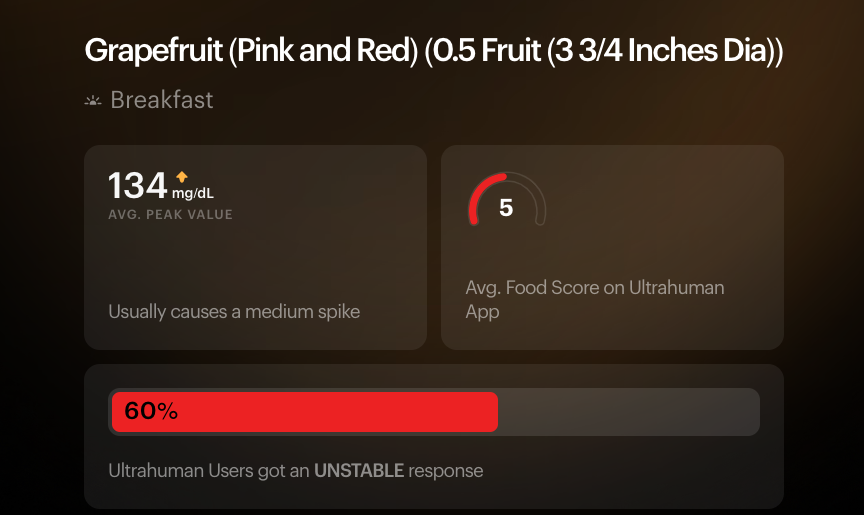
Grapefruit has a GI of around 25 and a GL of 3, making it seem metabolically safe. It’s also a good source of vitamin C and antioxidants like lycopene (especially in pink/red varieties). However, Ultrahuman CGM data shows a glucose response in many users. Grapefruit appears to cause a mild-to-moderate glucose rise, particularly when eaten without other macronutrients.
- OGDb Notes: Mild-to-moderate rise with variability. OGDb link →
- Glucose Impact: Medium
2. Strawberries

Strawberries are low in sugar and rich in vitamin C, folate, and anthocyanins, which have antioxidant properties. The GI is ~41 and GL around 3. Ultrahuman data shows minimal blood sugar impact, even when consumed alone. Their fiber and polyphenol content likely helps flatten the glucose curve.
- OGDb: Very low glycemic response; flat glucose curves are typical. OGDb link →
- Glucose Impact: Low
3. Cherries
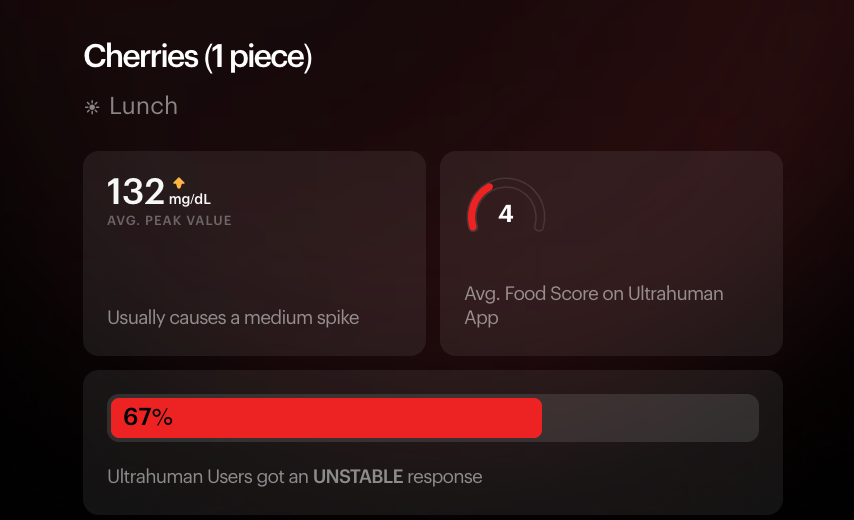
With a GI of ~20 and GL of 6, cherries seem like a safe bet. They’re rich in anthocyanins and vitamin C. However, Ultrahuman M1 CGM data shows moderate glucose responses in some users, especially with larger servings. The sugar content adds up quickly, even though it’s balanced by some fiber.
- OGDb Notes: Variable impact; portion size significantly affects response. OGDb link →
- Glucose Impact: Medium
4. Raspberries
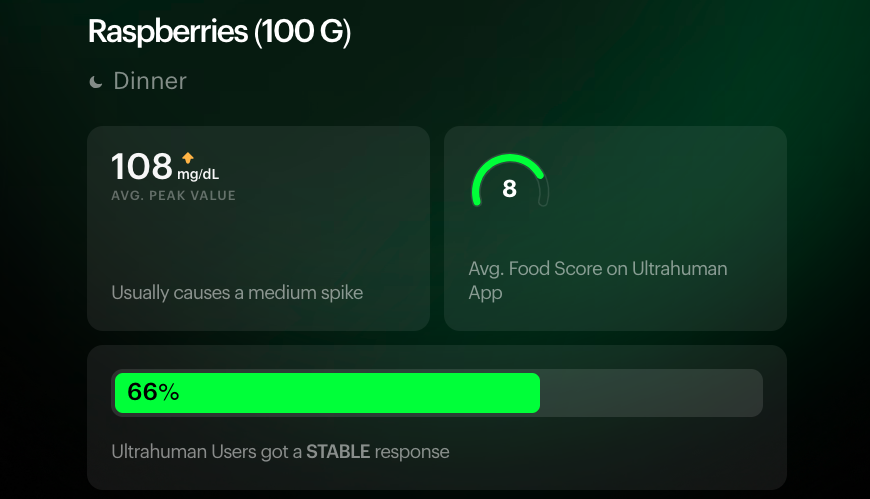
Raspberries are nutrient-dense: high in fiber (especially soluble), vitamin K, and antioxidants. GI is ~32, and GL is low. CGM data shows a mild glucose response in most users, even when eaten in larger portions. Ideal as a topping or smoothie base.
- OGDb Notes: Negligible impact; high fiber and water content help mitigate spikes. OGDb link →
- Glucose Impact: Low
5. Peaches
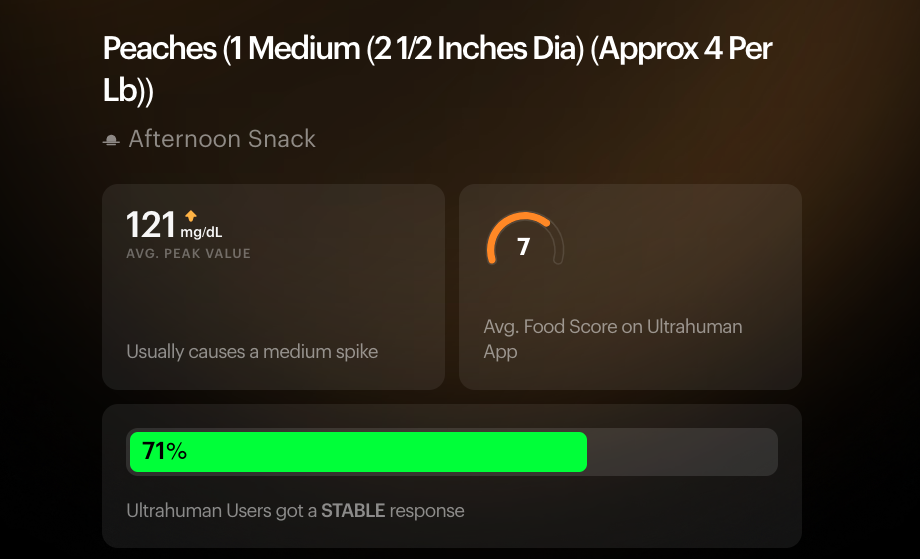
Peaches offer vitamins A, C, and potassium with a GI of ~42 and a GL of 5. OGDb data shows that whole, fresh peaches cause only a mild rise in glucose, and the effect is short-lived. Canned peaches or juice versions behave very differently and spike glucose significantly.
- OGDb Notes: Mild elevation with whole fruit; processed forms spike quickly. OGDb link →
- Glucose Impact: Low
6. Grapes (Red or Green)

Despite a moderate GI (~53), grapes are among the most glycemic fruits in CGM data. They are high in glucose and fructose and very easy to overconsume. One cup can cause a fast, sharp spike. Nutritionally, they offer resveratrol and vitamin K, but their glycemic impact is high.
- OGDb Notes: Rapid spike and fall; high response even in metabolically healthy users. OGDb link →
- Glucose Impact: High
7. Oranges
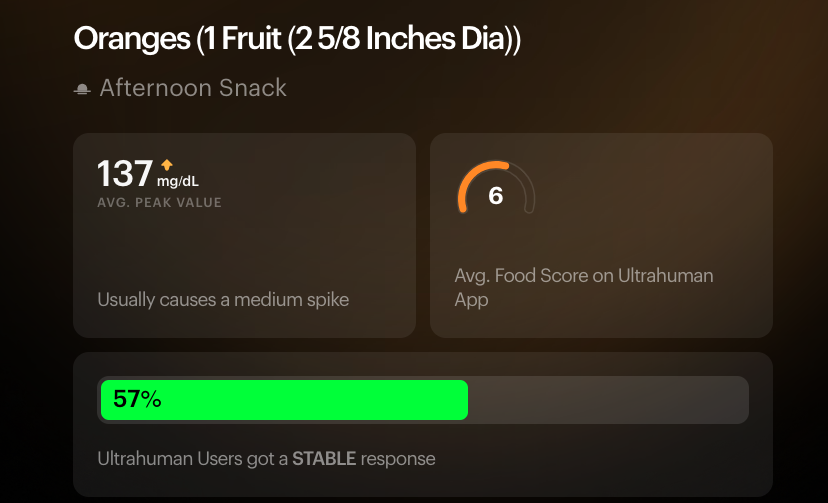
Whole oranges have a GI of ~40 and a GL of 5. They’re packed with vitamin C, potassium, and fiber. CGM data shows that oranges produce only modest rises in glucose, especially when consumed with some fat or protein. Orange juice, however, causes rapid spikes.
- OGDb Notes: Mild and manageable rise with whole fruit; juice spikes sharply. OGDb link →
- Glucose Impact: Low
8. Apples
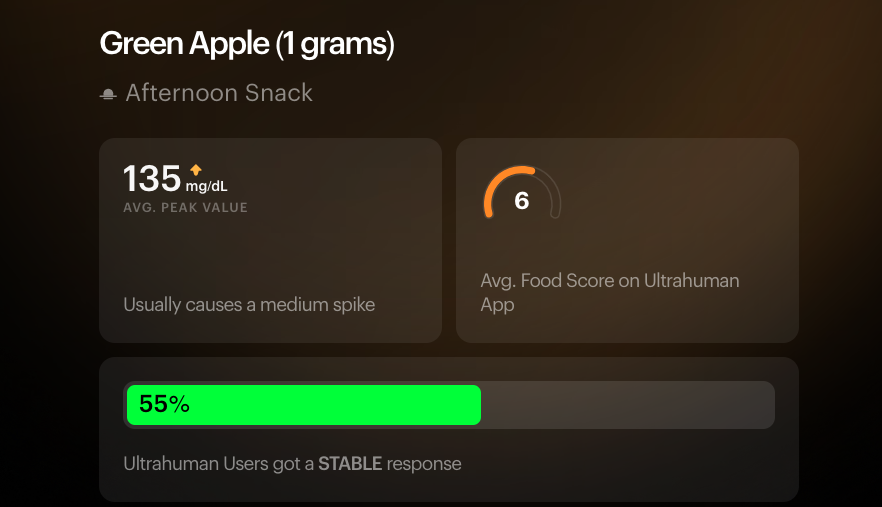
Green apples have a GI around 39 and are rich in pectin, a soluble fiber that may slow glucose absorption. They also contain polyphenols like quercetin. Ultrahuman data shows a mild, steady rise in glucose, typically flattened when paired with protein or fat.
- OGDb Notes: Mild increase; timing and pairing reduce impact. OGDb link →
- Glucose Impact: Low
9. Plums
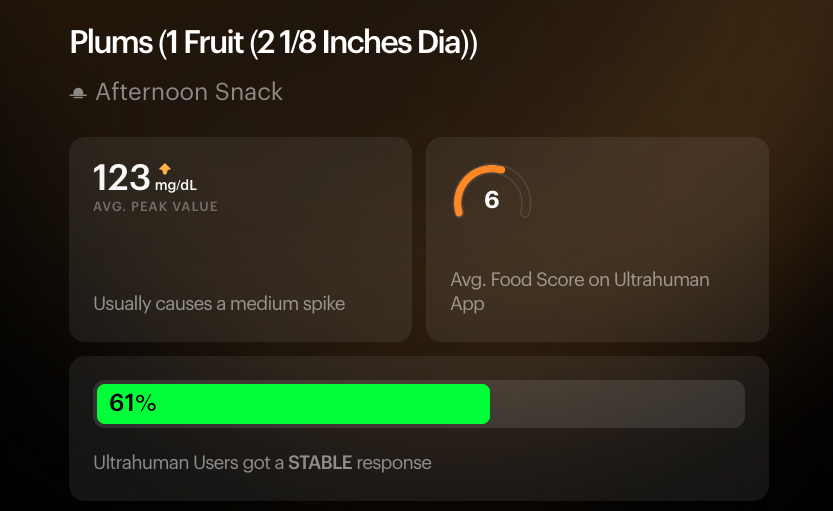
Fresh plums have a GI of ~40 and GL of ~2. They provide vitamin C, potassium, and some antioxidants. Ultrahuman OGDb data shows modest glucose impact from fresh plums. However, dried plums (prunes) have a much higher sugar density and often cause spikes.
- OGDb Notes: Gentle curve for fresh plums; prunes spike significantly. OGDb link →
- Glucose Impact: Low



